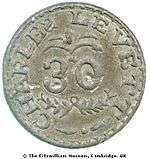Levett

Levett is an Anglo-Norman territorial surname deriving from the village of Livet-en-Ouche, now Jonquerets-de-Livet, in Eure, Normandy. Ancestors of the earliest Levett family in England, the de Livets were lords of the village of Livet,[1] and undertenants of the de Ferrers, among the most powerful of William the Conqueror's Norman lords.[2]
History
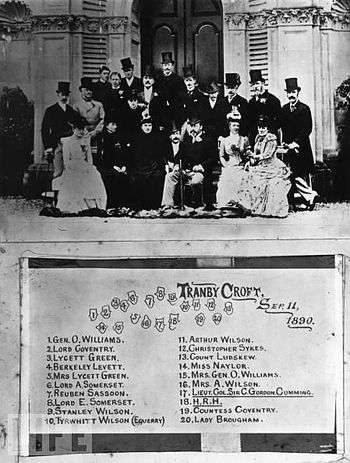
One branch of the de Livet family were prominent first in Leicestershire, and later in Derbyshire,[3] Cheshire, Ireland and Sussex,[4] where they held many manors, including the lordship of Firle.[5] The name Livet (first recorded as Lived in the 11th century), of Gaulish etymology, may mean a "place where yew-trees grow".[6][7] Like most Normans, the family's origins are probably partly Scandinavian.[8]
The year of the family's arrival in England is uncertain. But the family name appears during the reign of William the Conqueror.[9] The first family member in England, Roger de Livet, appears in Domesday as a tenant of the Norman magnate Henry de Ferrers. de Livet held land in Leicestershire, and was, along with Ferrers, a benefactor of Tutbury Priory.[10] By about 1270, when the Dering Roll was crafted to display the coats of arms of 324 of England's most powerful lords, the coat of arms of Robert Livet, Knight, was among them.[11]
Ancient English deeds subsequently refer to many lands across Sussex as 'Levetts,' indicating family possession of broad swaths of Sussex countryside.[12][13] Among the family's holdings was the manor of Catsfield Levett, today known simply as Catsfield. Like most medieval Norman families, the Levetts depended on the web of feudal hierarchy. They held their lands as overlords in return for knight's service (commonly called Knight's fees). As their feudal overlords thrived, so did they; conversely, their fate was tied to the unpredictable fortunes of those same overlords.
The Levetts and their descendants eventually held land in Gloucestershire, Yorkshire,[14] Worcestershire, Suffolk, Warwickshire, Wiltshire, Kent, Bedfordshire and later in Staffordshire. The Anglicisation of this Norman French surname took many forms, including Levett, Levet, Lyvet, Levytt,[15] Livett, Delivett, Levete, Leavett, Leavitt,[16] Lovett[17] and others.[18]
Levett family members were early knights and Crusaders — many members of both English and French branches of the family were Knights Hospitallers[19][20] — and they occupied a place in the English landed gentry for centuries.[21] Unlike the French branch of the family, no members of the English branch were ennobled, although they intermarried with nobility[22] and served as courtiers.[23] The Levett name was joined with such well-known English clans as the Byrons, the Darwins, the Ashley-Coopers, the Hulses, the Bagots, the Prinseps, the Ansons, the Feildings, the Holdsworths, the Reresbys, the Breretons, the Suttons, the Kennedys, the Cullums, the Gargraves, the Gresleys, the Legges and others.[24]

But the most common choice of professions among Levett men down the ages was the Anglican clergy – although one combined the ministry with the secular in an unusual way. Rev. William Levett of Buxted, East Sussex, inherited the iron foundries built by his brother John in the 16th century. Rather than sell them, Parson Levett became the first to cast iron cannon in England, served as 'Chief Gunstonemaker' to the King, and laid the foundation for an English industry.
A branch of the Levett family still occupies Milford Hall,[25] a family home in Staffordshire, England, where Richard Byrd Levett Haszard, a Levett descendant, recently served as High Sheriff of Staffordshire.[26][27] Members of the family formerly occupied Wychnor Park (or Hall) and Packington Hall, two country mansions in the same county, where English artist James Ward painted three Levett children playing in 1811.[28] Ultimately, the two distant branches of the Levett family of Sussex, living nearby each other in Staffordshire, intermarried.[29] Another branch of the Milford Hall Levetts occupy the family residence The Hall, Angle, Pembrokeshire, Wales, although the name is now Mirehouse because of an inheritance.[30]
As with many families of Anglo-Norman extraction, some branches thrived, while others fell on hard times. The vicissitudes of character — and the collapsing feudal order — played havoc with the fortunes of some family members. The lordship of Firle, East Sussex, for instance, longtime seat of the family, passed from family control in 1440 on the indebtedness of then-lord Thomas Levett.[31] The bankrupt Levett also forfeited his inherited lordship of Catsfield, East Sussex.
Similarly, in 1620 John Levett of Sedlescombe, Sussex, Gentleman, sold his half-interest in Bodiam Castle, as well as inherited family lands called Northlands, Parklands, Eastlands and Grovelands, as well as properties across Sussex and Kent, including in Bodiam, Ewhurst, Salehurst, Battle, Wartling, Penhurst, Newfield and Catsfield, Sussex, as well as Hawkhurst, Kent, to Sir Thomas Dyke for £1,000, from whom the properties subsequently passed to the Earl of Thanet. The distress sale left Levett's descendants listed as simple yeomen, instead of the knights, esquires and gentlemen of previous generations.[32]
Other ancestral lands passed from the family with the marriage of Levett heiresses. Those inheriting from the Levetts included the Eversfields, the Gildredges, the Chaloners, the Ashburnhams, the Hulses and other prominent Sussex, Kent and Yorkshire families.
Other Levetts fell on hard times as the family's fortunes sometimes dwindled, or were carried into other clans. John Levett, a guard on the London to Brighton coach, was convicted of petty theft and transported to Australia in the nineteenth century.[33] English records reveal Levetts embroiled in bastardy cases or relegated to poorhouses. As with Thomas Hardy's hapless d'Urbervilles, noble Norman lineage was no guarantor of rectitude, ability or fate.

Some Levetts moved abroad in search of opportunity. A Levett relation, a British clerk in India, was friend to Rudyard Kipling and a minor Victorian novelist. Another was an English factor living in Livorno, Italy, shuttling back and forth to Constantinople for the Levant Company. (Francis Levett later moved to British East Florida, became a planter and ultimately failed; his son Francis Jr. returned to America, where he became the first to grow Sea Island cotton.) [34]
The Levett family became part of the British Empire's expanding grasp. Sir Richard Levett was one of the first Governors of the Bank of England, a member of the original London East India Company and the Lord Mayor of London in 1699. He resided at his estate at Kew, later sold to the Royal Family. In the eighteenth century, John Levett, born in Turkey to an English merchant father and brother of planter Francis, became alderman and Mayor of Calcutta, India.
Among the earliest English explorers of North America was Captain Christopher Levett, granted some 6,000 acres (24 km2) by the King to found the third English colony. The settlement failed. Capt. Levett died on a return voyage to England in 1630 after conferring with John Winthrop.
Over the generations, Levett descendants spanned the social ranks: one family relation,[35] an English clergyman[36] who served as chaplain to the House of Commons, is memorialized in Westminster Abbey where he dropped dead reading the Ninth Commandment; another family ancestor was among the founders of an Oxford University college;[37] another, an assistant pantry steward aboard an ocean liner, perished when the RMS Titanic sank; a fourth, a simple Suffolk butcher, emerged as leader of populist Kett's Rebellion in the sixteenth century.[38] Another descendant, a Yorkshire knight and Speaker of the House of Commons, became one of the country's most powerful men, celebrated by Shakespeare. The family dynasty he built imploded when his son was hanged at York for murder, and his brother gambled away his legacy, dying in a London flophouse.
One family member was an unschooled Yorkshireman who, having worked as a Parisian waiter, then trained as an apothecary. Robert Levet returned to England, where he treated denizens of London's seedier neighbourhoods. Having married an apparent grifter and prostitute, Levet was taken in by the poet Samuel Johnson, who eulogized him as "officious, innocent, sincere, Of every friendless name the friend."[39] While Samuel Johnson adopted one Levet as boarder, he was apologizing to another better-placed Levett who held the mortgage on Johnson's mother's home in Lichfield.[40]
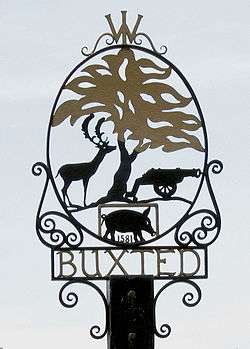
In a few cases Levetts were forced by religious belief to flee England for the colonies. Among these were John Leavitt and Thomas Leavitt, early English Puritan immigrants to Massachusetts and New Hampshire, respectively, whose names first appear in seventeenth-century New England records as Levet or Levett.[41] John Leavitt was a tailor; Thomas a simple farmer, and their exact connection to the original family in England remains uncertain.
Today there are many Levetts living outside England, including in South Africa, Australia, New Zealand,[42][43] Canada and Ireland, where the first 'de Livet' ventured in the thirteenth century as part of the Norman invasion, becoming one of Dublin's earliest mayors. The spelling of the name varies from place to place.
Members of the original de Livet family continue to reside in France.[44] The Normandy branch traces its descent to Jean de Livet, chevalier and banneret in 1216 to King Philip II of France, builder of the first Louvre fortress in Paris.[45][46] Chevalier Thomas de Livet, noted Crusader and son of Jean, was knighted by King Philip II's successor, King Louis IX of France, in 1258.[47] The de Livet family of Normandy bore as their coat of arms since medieval times three gold mullets on an azure field.[48][49]
The de Livet family was among the ancient noble families of France, or noblesse d'épée. (The French revolution stripped the hereditary French nobility of its feudal privileges.) Following the French revolution, several members of the de Livet family were made Knights (Chevaliers) of the Légion d'honneur.[50]
The English branch of the de Livet (Levett) family claims descent from Jean de Livet, seigneur of Livet (now Jonquerets-de-Livet) in 1040, before the Norman Conquest.[51]
The origin of the name Levett
This is an English surname although it may have different spelling the likes of Levett, Levet, Leavett, Leavitt, Livett, Livitt and others.[52] As to its origin, or rather we can talk about etimology of the word, there are a lot of possible variants. It may be derived from Anglo-Norman, and later French word. The derivation is from the Anglo-Norman French word "levet", which in its turn is originated from "lou" or "leu", in the meaning of young wolf. And another possible origin can be tracked from numerous Norman names of locations with such name as "Livet". There are also two possible English origins, either developed from personal names. The first comes from "Lefget", which may be interpreted like "beloved wise person." And the second one is "Leofgyth" which may be translated as "beloved battle", may be derived from the personal name "Leofgyth". It may have a meaning of someone that has features of the bird, such as observance and flight.[52]
People
Members of the Levett family include:
- Ada Elizabeth (A.E.) Levett, born Bodiam, East Sussex, renowned medieval historian, vice principal, St Hilda's College, Oxford, professor at Westfield College, University of London, d. 1932 [53]
- Arthur Levett, born Petworth, West Sussex, d. 1700, Talbot County, Maryland [54][55]
- Capt. Berkeley John Talbot Levett, London, Saint-Jean-Cap-Ferrat, Scots Guard, Gentleman Usher to the Royal Family, married brewery heiress Sibell Bass, witness in the infamous Royal Baccarat Scandal involving the Prince of Wales
- Capt. Christopher Levett, English explorer of New England, first owner of Portland, Maine, born at York, England, 1586
- Colonel Theophilus John Levett (1829-1899), British Conservative Party Politician[56]
- Major Edward Levett, Wychnor Park, Staffordshire, Rowsley, Derbyshire, Pau, France, married Caroline Georgina Longley, daughter of Charles Thomas Longley, Archbishop of Canterbury [57]
- Egerton Bagot Byrd Levett-Scrivener, Flag Lieutenant, Royal Navy, Bursar, Keble College, Oxford, son of Col. Richard Byrd Levett of Milford Hall, took additional name of Scrivener on inheritance, married daughter of British diplomat Sir Harry Smith Parkes, lived at Sibton Manor, Yoxford, Suffolk
- Elias Lyvet, Abbot, Rufford Abbey, Sherwood Forest, Nottinghamshire, England, 1332
- Sir Elias de Lyvet, Knight, attempted insurrection against King Henry IV, 1413
- Elton Levett, Esq.,[58] Nottingham, surgeon; daughter Frances married Hon. George Byron of Rochdale; Elton Levett married to Elizabeth Rickards, daughter of John Rickards, Alderman and Mayor of Nottingham [59]
- Ernest Laurence Levett, K.C., graduate, Fellow, St Johns College, Cambridge,[60] Bencher, Lincoln's Inn, London, 1873,[61][62] son of Benjamin Levett Esq., Hull, East Riding of Yorkshire [63]
- Lt. Col Eustace Levett, OBE, Chief Signal Officer, China Command (Hong Kong) 1941–45; P.O.W., World War II
- F. M. Jane Levett, Lecturer, Department of Logic, University of Glasgow, translator (as M. J. Levett), Plato's Theaetetus, sister of historian Elizabeth Levett, d. 1974 [64]
- Francis Levett, English tobacco merchant who married the sister of Sir John Holt, the Lord Chief Justice of England, partner in Sir Richard Levett & Co. with his brother Richard; son Richard a barrister and Alderman of London; ancestor of British geologist and inventor Levett Landon Boscawen Ibbetson, a pioneer of photography
- Francis Levett, British planter in East Florida, built an early Florida plantation, which the family was forced to abandon; his son returned to Georgia to become the first to plant Sea Island cotton (Gossypium barbadense) in America
- George Levett, colonist, arrived in Virginia Colony on ship Bona Nova, servant, 1619 [65]
- George Alfred Levett, assistant pantry steward, 21, Southampton, England, RMS Titanic
- Gerald Aylmer Levett-Yeats, wildlife artist, illustrator, Calcutta, India, brother of Sidney Levett-Yeats; illustrator of The Birds of Singapore Island and The Common Birds of India (1925) [66]
- Sir Gilbert de Lyvet, Knight, Lord Mayor of Dublin, Ireland, 1233–34, 1235–37, witness to 1210 gift by Isabel de Clare, 4th Countess of Pembroke to the Cathedral of the Holy Trinity, Dublin, in honour of her father Richard de Clare, 2nd Earl of Pembroke, whose tomb is in the Cathedral [67][68]
- Gordon Levett (1921–2000), pilot, Royal Air Force, World War II, member of Squadron 101, First Fighter Squadron in the Israeli Air Force, only English Gentile pilot in Israeli Air Force, Lieutenant Colonel, Israeli Air Force, 1948
- Rev. Grevile Marais (G.M.) Livett, Canon, Rochester Cathedral, later vicar of Wateringbury, Kent, antiquarian, FSA, author on ecclesiastical architecture [69]
- Dr. Henry Levett, Old Carthusian, eminent physician at London Charterhouse who wrote a pioneering tract on smallpox, 1710
- James Levett, Mayor, Waterford, Ireland, 1610
- John Leavitt, English Puritan, tailor, founding deacon, Old Ship Church, Hingham, Massachusetts, 1681 [70][71]
- John Livet, Lord of the Manor of Firle, Sussex, 1316
- John Levett, Little Horsted, East Sussex, one of Sussex's earliest ironmasters, d. 1535, brother Rev. William Levett took over family iron interests
- John Livett, Mayor, Hastings, East Sussex, 1506, 1514, 1520, 1552 [72]
- John Levett, Salehurst, Sussex, purchaser of Bodiam Castle, 1588[32]
- John Levet, London merchant, member of the Virginia Company of London, 1609 [73]
- John Levett, naturalist, author of The Ordering of Bees: Or, the True History of Managing Them, London, 1634
- John Levett, Mayor, Waterford, Ireland, 1649
- John Levett, Tory Member of Parliament, Staffordshire, 1761–62, friend of Erasmus Darwin, Matthew Boulton and others, sometime member of the Lunar Society [74]
- John Levett (1721-1799), English landowner and investor[56]
- John Levett, merchant, Alderman, Mayor, Calcutta, India, 1768–70; born Constantinople, son of English Turkey merchant married to Charlotte de Peleran, daughter of French diplomat Pierre Armand de Peleran[75]
- John Levett, athlete, born Battersea, twice champion runner of England, ran 10 miles (16 km) in 52:35, 1852
- John Levett (1927–2008), postal historian, Fellow of the Royal Philatelic Society London (President 1986–88); member of honour, European Academy of Philately; signatory, Roll of Distinguished Philatelists; authority on crash and wreck mail, maritime and siege mail [76]
- John Levett, prize-winning poet, (winner, British National Poetry Competition), Their Perfect Lives shortlisted for Whitbread Poetry Prize, Norfolk, England [77]
- John Levett-Yeats, grandson of English merchant planter Francis Levett, son of David Yeats, M.D., Secretary of British East Florida, married to Frances Arabella, daughter of Philip Reinagle, Royal Academy, artist [78]
- Keppel Bagot Levett, one of the first casualties of the BSAP (British South Africa Police) in World War II, died on active service, March 1941
- Lawrence Levett Esq., JP, owner of The Grove, Hollington, East Sussex, landowner, son of John Levett, ironmaster, died 1585, his estates passing to his sister Mary (Levett) Eversfield [79]
- Levett Blackborne, Esq., graduate of St Catharine's College, Cambridge;[80] barrister, Lincoln's Inn, London, son of Abraham Blackborne, mercer of London;[81] grandson of Lord Mayor of London Sir Richard Levett; inherited Levett holdings at Kew and sold the Dutch House to the Royal Family; longtime adviser to the Dukes of Rutland
- Maud Sophia Levett (Mrs. William Swynnerton Byrd Levett), author, writer on religious themes, Milford Hall, Milford, Staffordshire[82]
- Nicholas Levett, Gentleman Usher to the British Royal Household, 1660–81
- Rev. Nicholas Levett, rector, Westbourne, West Sussex, fellow of Balliol College, Oxford, buried at Beckley, Oxfordshire, 1687
- Percival Levett, merchant, Chamberlain and Sheriff of the city of York, 1597
- Rev. Ralph Levett, Christ's College, Cambridge, domestic chaplain to Sir William Wray; rector, Grainsby, Lincolnshire, Puritan sympathizer, protégé of Rev. John Cotton, brother-in-law of Rev. John Wheelwright, b. 1600
- Rawdon Levett, Pocklington School, St. John's College, Cambridge; mathematics professor, second master at King Edward's School, Birmingham, where Levett House is named for him; brother of barrister Ernest Laurence Levett[83]
- Reginald Lyvet, August 1282, Dublin, Ireland, nominated by Roger Bigod, 5th Earl of Norfolk to serve as his attorney in Ireland for one year on Bigod's absence on the King's business in Wales [84]
- Richard Levett, Knight, Sussex, named as one of county's leading citizens, 1411 [85]
- Richard Levette, English burgess of Calais, France, 1422
- Richard Levett, Mayor, Doncaster, South Yorkshire, d. 1618
- Rev. Richard Levett, vicar, Ashwell, Rutland, father of Lord Mayor Sir Richard Levett and Dean of Bristol William Levett
- Sir Richard Levett, Lord Mayor of London (1699), owner of Kew Palace, adventurer member, London East India Company, Governor, Bank of England (1698), proprietor, Sir Richard Levett & Co., brother of Rev. Dr. William Levett, Dean of Bristol [86]
- Rev. Richard Levett, rector, West Wycombe, Buckinghamshire 1765–1805, married his cousin Anne Levett, daughter of Theophilus Levett
- Lieut. Col. Richard Walter Byrd Levett, Old Etonian, High Sheriff of Pembrokeshire, Wales, Lieutenant Colonel of 4th Batt. North Staffs Regiment, name changed to Richard W.B. Mirehouse on succeeding to Mirehouse family property at The Hall, Angle, Pembrokeshire.[87] Brother of Egerton Bagot Byrd Levett-Scrivener of Sibton Abbey, Suffolk
- Second Lieutenant Richard Byrd Levett of Milford Hall, Old Etonian, The King's Royal Rifle Corps, killed in action, Irles, France, 14 March 1917[88]
- Sir Robert de Livet, Knight, West Firle, Sussex, elected to hold inquests in Hastings, Pevensey and Lewes, 1279–88, died 1316[89]
- Robert Levet, native of Hull, Yorkshire, impoverished apothecary who lived with Samuel Johnson, author of a famous poem eulogizing Levet
- Robin Levett (1925–2008), Australian author and horse breeder, "First Lady of Australian Racing", wife of businessman Geoffrey Levett [90]
- Sidney Kilner Levett-Yeats, born to once-important British colonial family, descendant of East Florida planter Francis Levett, low-level bureaucrat in the India Office civil service, friend to Rudyard Kipling, fellow member of Lahore's Punjab Club, became minor Victorian novelist, author of The Honour of Savelli [91]
- Theophilus Levett, Lichfield town clerk 1721–46, early friend and correspondent of Dr. Samuel Johnson
- Theophilus John Levett, Member of Parliament, Staffordshire 1880–85
- Theophilus Basil Percy Levett, son of MP Theophilus John Levett, Eton graduate, Lieut., Coldstream Guards, JP, barrister, Inner Temple, London, died 1929 [92][93]
- Thomas Levett, lord of the manor, Catsfield Levett, East Sussex, 1347
- Thomas Levett, landowner, Sussex, sold the manor of Gotham in Bexhill-on-Sea to James Fiennes, 1st Baron Saye and Sele; his daughter Elizabeth married William Gildredge ca. 1440
- Rt. Rev. Thomas Levet, Canon of Holy Trinity Cathedral, Dublin, Ireland, son of William Levet and Anastasia Walsh, who were determined by Royal hearing into Levet's parentage (amidst allegations of bastardy) to be his "lawful" parents, 2 July 1526 [94][95]
- Thomas Levett, monk 1511–38, Battle Abbey, Battle, Sussex, pensioned at the Dissolution of the Monasteries, 1538 [96]
- Thomas Levett, High Sheriff of Rutland 1639, Judge of the Admiralty for the Northern Counties, antiquarian, Tixover, Rutland
- Rev. Thomas Levett, rector of Whittington, Staffordshire for 40 years, owner of Packington Hall [97]
- Thomas Levett-Prinsep,[98] son of Theophilus Levett of Wychnor Hall, heir to his uncle Thomas Prinsep, Old Etonian, High Sheriff of Derbyshire, resided at Croxall Hall, Derbyshire, took name of Prinsep on inheritance of his uncle's property, Justice of the Peace and landowner [99]
- Thomas Levett-Prinsep, son of Thomas Levett-Prinsep of Croxall Hall, married granddaughter of Devon merchant and MP Arthur Howe Holdsworth, subsequently moved to Devon
- Walter de Livet, third mayor of Chester, England, 1246
- Walter Jesse Levett, b. 1879, Quarry Cottage, Speldhurst, Kent, Lance Corporal, Grenadier Guards, killed in action France, 1917 [100]
- William Levett, lord of the manor, Hooton Levitt, South Yorkshire, inherited patronage of Roche Abbey on marriage (ca. 1220) to Constantia, granddaughter of Richard FitzTurgis, co-founder of Roche with Richard de Busli [101]
- William Levett, member of Knights Hospitallers, lord of the manor of Newlands Estate, Normanton, d. 1477, grandfather of Sir Thomas Gargrave, Speaker of the House of Commons [102]
- Rev. William Levett, rector of Buxted, East Sussex, established the iron foundry industry in Sussex, d. 1554
- Rev. Dr. William Levett, principal, Magdalen College, Oxford, later Dean of Bristol, d. 1694
- William Levett, Esq., longtime courtier to King Charles I of England who accompanied the King to his execution and became embroiled in controversy over whether the King had penned the Eikon Basilike, father of Dr. Henry Levett [103]
- William Levett, warden of the Drapers Company, London, served with fellow warden Grinling Gibbons 1704–05 [104]
- William Levett, Bodiam, Sussex, purchased manors of Owley and Palstre in Wittersham, Kent, from novelist Jane Austen's brother Edward, which Levett left to his daughters (d. 1842)
- William Howard Vincent "Hopper" Levett, Goudhurst, Kent, Kent and England cricketer
- Capt. William Swynnerton Byrd Levett, JP, DL, Royal Inniskilling Fusiliers, Milford Hall, Staffordshire, landed proprietor, d. 1929
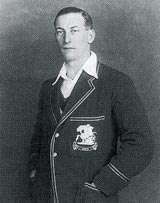 1
1 2
2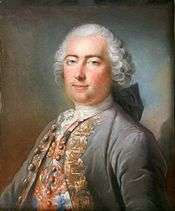 3
3 4
4 5
5 6
6 7
7 8
8 9
9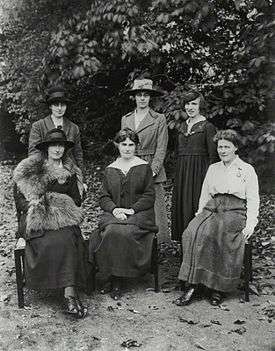 10
10 11
11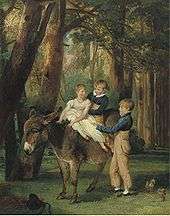 12
12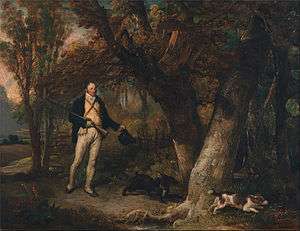 13
13
- William Howard Vincent 'Hopper' Levett, English cricketer, born Goudhurst, Kent, 25 January 1928
- Sir Richard Levett, Lord Mayor of London, 1699–1700
- Louis-François de Livet, chevalier, Marquis de Barville during French Revolution, when nobility were stripped of their privileges.
- Dr. Robert Levett, Lichfield, Staffordshire. Collection of Erasmus Darwin House, Lichfield
- Col. Theophilus John Levett, Member of Parliament, Lichfield, 1880–85
- Australian soldier J W Levett, Broadmeadows Army Camp, Melbourne, Australia, 29 March 1916
- Portrait of Mrs. Thomas Levett of Normanton, West Yorkshire. Collection of Hardwick House, Suffolk
- Theophilus Levett Hunting at Wychnor, Staffordshire, 1817, James Ward, R.A.. Yale Center for British Art
- Portrait de M. Levett, Négociant Anglais, en Costume Tartare. Francis Levett, English Turkey merchant, dressed in Turkish costume, circa 1740, drawing by Jean-Étienne Liotard. The Louvre Museum, Paris
- Staff of St Hilda's College, Oxford, including medievalist Elizabeth Levett, October 1919
- Herbert Cuthbert Levett, born Derbyshire, England. Emigrated to New Zealand 1891 to raise sheep near Beaconsfield
- The Levett Children. John, Theophilus and Frances Levett. Portrait by James Ward, R.A., Wychnor, Staffordshire, November 1811
- Portrait of the Rev Thomas Levett and Favourite Dogs Cock-Shooting, oil on canvas, James Ward, R.A., 1811. Yale Center for British Art
Places named after the family

- Hooton Levitt, South Yorkshire
- Catsfield Levett, East Sussex, now simply Catsfield
- Levitt Hagg, South Yorkshire
- Fort Levett, Casco Bay, Maine
- Levette Lake, British Columbia, Canada
- Levitstown (initially Lyvetiston), County Kildare, Ireland [105][106][107][108]
- Leavitt, California
- Leavittsburg, Ohio
- Leavitt Island, Alaska North Slope [109]
- Leavittstown, now Effingham, New Hampshire
- Leavitt's Hill, now Deerfield, New Hampshire
- Leavitt Peak, California
- Leavitt, Alberta, Canada
- Levetts Fields, Lichfield, Staffordshire
- Levetts Square, Lichfield, Staffordshire
- Leavitt (crater), Moon
- 5383 Leavitt, asteroid, Solar System
Places associated with the Levett family
These places are or were associated with the Levett family:
- Bodiam Castle, Bodiam, East Sussex
- Firle, East Sussex
- Wychnor Park, Staffordshire
- Milford Hall, Staffordshire
- Croxall Hall, Staffordshire
- Kew Palace, Richmond upon Thames [110]
- Walton Hall, Walton-on-Trent, Derbyshire
- Packington Hall, Whittington, Staffordshire
- Hardwick House, Bury St Edmunds, Suffolk
- Breamore House, Hampshire
- Roche Abbey, South Yorkshire [111]
- Sibton Abbey, Yoxford, Suffolk
- Normanton, West Yorkshire
- All Saints Church, Normanton, West Yorkshire
- St Leonards-on-Sea, East Sussex
- Buxted, East Sussex
- Angle, Pembrokeshire, Wales
- Hollington, East Sussex
- Bexhill-on-Sea, East Sussex
- Hillesley and Tresham, Gloucestershire
- Doncaster, South Yorkshire
- Wakefield, West Yorkshire
- Hopwas, Staffordshire
- Pontefract, West Yorkshire
- St James' Church, High Melton, South Yorkshire
- Flintham, Nottinghamshire
- St. Pierre, Monmouthshire, Wales
- Dagenham, East London
- Kew, Surrey
- Salehurst, East Sussex
- Great Longstone, Derbyshire
- Wickersley, South Yorkshire
- Westbourne, West Sussex
- Beckley, Oxfordshire
- Botolphs, West Sussex
- Warbleton, East Sussex
- Little Horsted, East Sussex
- Savernake Forest, Wiltshire
- Swindon, Wiltshire
- Lichfield, Staffordshire
- Hornchurch, London Borough of Havering, East London
- Rochester Cathedral, Rochester, Kent
- Whittington, Staffordshire
- Polegate, East Sussex
- Seaford, East Sussex
- Nova Scotia
- British East Florida
- Portland, Maine
- Cushing Island, Maine
- York County, Maine
- Gallery
- 1
 2
2.jpg) 3
3 4
4 5
5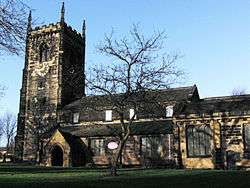 6
6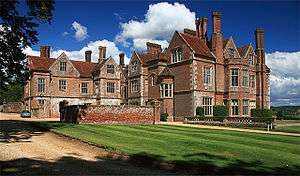 7
7 8
8 9
9 11
11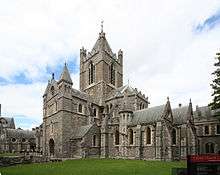 12
12 13
13 15
15
- Charterhouse Hospital, London, Dr. Henry Levett, chief physician
- The ruins of Sibton Abbey, 1827, only Cistercian Abbey in East Anglia. Owned by Levett-Scrivener family
- Roche Abbey, South Yorkshire, under patronage of Levetts of Yorkshire
- Kew Palace, Kew, Richmond, Surrey, home of Sir Richard Levett
- Croxall Hall, home of the Levett-Prinsep family
- All Saints Church, Normanton, West Yorkshire, medieval tomb chest of the Malet and Levett families
- Breamore House, Hampshire, repository for Levett heirlooms
- Packington Hall, Whittington, Staffordshire. Longtime home of one branch of Levett family of Staffordshire
- Bodiam Castle, Sussex, purchased by John Levett, 1588
- Tomb of Lt Richard Byrd Levett, King's Royal Rifle Corps, Church of St Thomas, Walton-on-the-Hill, Staffordshire
- Christ Church Cathedral, Dublin, burial place of Lord Mayor Gilbert de Lyvet
- Funerary monument to Capt. Egerton Bagot Byrd Levett-Scrivener, St Paul's Church, Sibton, Suffolk
- Colehayes Park, Bovey Tracey, Devon, country house, seat of Capt. Theophilus Levett of Wychnor Park
In media
- Levett was the name given by Alfred Hitchcock to the villain in his first film, The Pleasure Garden, a 1925 silent movie
- Geoffrey Levett is the male lead character in Margery Allingham's novel, The Tiger in the Smoke (made into a 1956 British film of the same name)
- Alfred, Lord Tennyson, a vicar's son, wrote in "Lady Clara Vere de Vere":
"Howe'er it be, it seems to me
'Tis only noble to be good;
Kind hearts are more than coronets,
And simple faith than Norman blood."[112]
Adaptations
- One branch of the family spell their name Livett,[113] and produced five mayors of Hastings in the sixteenth century.[114] These Livetts shared a coat-of-arms with the Sussex Levetts, but changed their motto to read (in Latin): Cruce Non Leone Fides ("I put my faith in the Cross and not in the Lion"). One wonders what prompted the editorial comment.
- The family name was carried into other English families through intermarriage, yielding the double-barrelled names Levett-Scrivener,[115] Levett-Prinsep [116] and Levett-Yeats [117][118]
See also
References
Notes
- ↑ The Norman invaders of England were the first in Western Europe to use surnames. They usually styled themselves after the name of the village that was under family feudal control by use of the particule de indicating ownership.
- ↑ The Origins of Some Anglo-Norman Families, David C. Douglas, Lewis C. Loyd, 1951. New edition, (1980). Baltimore, Maryland: Genealogical Publishing Company. ISBN 0-8063-0649-1
- ↑ The Levetts of Derbyshire were a gentry family whose last heiress married a Shakerley of Great Longstone. The family was extinct by the time of the first Visitation of the Heralds.
- ↑ London, R.C.P.; Munk, W. (1830). The roll of the Royal College of Physicians of London: Continued to 1993. Sherwood, Gilbert and Piper, printed by W. Marchant. p. 229. Retrieved 2017-01-07.
- ↑ British Archaeological Association; British Archaeological Association. Central Committee; Royal Archaeological Institute of Great Britain and Ireland. Central Committee; Royal Archaeological Institute of Great Britain and Ireland; Royal Archaeological Institute of Great Britain and Ireland. Council (1851). The Archaeological Journal. 8. Royal Archaeological Institute. p. 78. Retrieved 2017-01-07.
- ↑ François de Beaurepaire, Les noms des communes et anciennes paroisses de L'Eure, éditions Picard 1981. p. 136.
- ↑ Albert Dauzat and Charles Rostaing, Dictionnaire étymologique des noms de lieux en France, Librairie Guénégaud 1979. p. 406.
- ↑ The village of Livet predated the family, who simply took its name from their holding.
- ↑ Regesta Regum Anglo-Normannorum: the Acta of William I, 1066–1087, David Bates (ed.), Oxford University Press, 1998
- ↑ Keats-Rohan, K.S.B. (1999). Prosopography of Persons Occurring in English Documents, 1066-1166. Woodbridge, Suffolk: Boydell Press. Retrieved 2011-04-11.
- ↑ Foster, Joseph (1902). Some Feudal Coats of Arms from Heraldic Rolls. London: James Parker & Co. Retrieved 2011-05-04.
- ↑ "Archive of the Gage Family of Firle, 1255–1849, East Sussex Record Office, The National Archives". nationalarchives.gov.uk. Retrieved 2017-01-07.
- ↑ "Ashburnham family archives: deeds, 1200–1836, East Sussex Record Office, The National Archives". nationalarchives.gov.uk. Retrieved 2017-01-07.
- ↑ Miscellanea Genealogica Et Heraldica. Hamilton, Adams, and Company. 1896. p. 82. Retrieved 2017-01-07.
- ↑ Sussex Archaeological Society (1862). Sussex Archaeological Collections Relating to the History and Antiquities of the County. Sussex Archaeological Society. p. 96. ISSN 0143-8204. Retrieved 2017-01-07.
- ↑ "Dictionary of American Family Names". ancestry.com. Oxford University Press. ISBN 0-19-508137-4. Retrieved 2017-01-07.
- ↑ At least one branch of the Levett family bore as their coat of arms 'three wolves heads erased.' The armiger is attributed by Bernard Burke to a list of Knights in Normanton, Nottinghamshire. Curiously, the same coat of arms was also borne by several Lovett families. It is the only known branch of the Levett family which bore these arms.
- ↑ Bateman, J. (1883). The Great Landowners of Great Britain and Ireland: A List of All Owners of Three Thousand Acres and Upwards, Worth Ł3,000 a Year; Also, One Thousand Three Hundred Owners of Two Thousand Acres and Upwards, in England, Scotland, Ireland & Wales, Their Acreage, and Income from Land, Culled from The Modern Domesday Book; Also Their Colleges, Clubs, and Services. Corrected in the Vast Majority of Cases by the Owners Themselves. With a Series of Tables Originally Compiled for "English Land and English Landowners," by Hon. G. Brodrick, with a Dissertation Thereon. Harrison and Sons. Retrieved 2017-01-07.
- ↑ Kerdu, Pierre Marie Louis de Boisgelin de (1805). Ancient and modern Malta, as also, the history of the knights of St. John of Jerusalem. 2. London. p. 310.
- ↑ There are also repeated references to Levett family involvement, particularly in Sussex and Ireland, with the Knights Templar.
- ↑ Miscellanea Genealogica Et Heraldica. Hamilton, Adams, and Company. 1896. p. 117. Retrieved 2017-01-07.
- ↑ Some critics of the family have queried whether the family's real aptitude lay in simply marrying well.
- ↑ Ashburnham, J.; Ashburnham, G.A. (1830). A Narrative by John Ashburnham of His Attendance on King Charles the First from Oxford to the Scotch Army, and from Hampton-Court to the Isle of Wight ...: To which is Prefixed a Vindication of His Character ... and Conduct, from the Misrepresentations of Lord Clarendon. 1. Payne and Foss. Retrieved 2017-01-07.
- ↑ Ranieval, The Marquis of Ruvigny and (1 May 2013) [1911]. The Plantagenet Roll of the Blood Royal: The Mortimer-Percy Volume. Heritage Books. p. 454. ISBN 978-0-7884-1872-3.
- ↑ The Milford Hall family has descendants in America. Alfred Anson, whose family came from nearby Shugborough Hall and who was born at Windsor Castle, married Mary Anne Levett of Milford Hall and went to Virginia in the late nineteenth century as an Episcopal rector. He was the son of Hon Rev. Frederick Anson.
- ↑ The Levetts of Milford Hall received a letter in 1824 from York Herald Sir Charles George Young delineating the Levett coat of arms and genealogy, archives.staffordshire.gov.uk
- ↑ "The High Sheriffs' Association". highsheriffs.com. Retrieved 2017-01-07.
- ↑ "James Ward, R.A. (1769-1859) , Group Portrait of John, Theophilus and Frances Levett, full-length, the younger two seated on a donkey, in a wooded landscape | Christie's". christies.com. Retrieved 2017-01-07.
- ↑ "Staffordshire, Walton on the Hill | Heraldry on the tomb of Lt Richard Levett, Church of St Thomas, Walton on the Hill, Staffordshire, Flickr". flickr.com. Retrieved 2017-01-07.
- ↑ Lieut.-Col. Richard Walter Byrd Mirehouse, formerly Levett (1849–1914), an Old Etonian, moved to family properties at Angle by 1886. He served as High Sheriff of Pembrokeshire in 1886, and bequeathed the family holdings to his descendants. His descendant Councillor John Allen-Mirehouse serves as Pembrokeshire County Council Deputy Leader. Archived 2011-07-20 at the Wayback Machine.
- ↑ "Debts of Thomas Lyvet, West Firle, Chancery Records, The National Archives". nationalarchives.gov.uk. Retrieved 2017-01-07.
- 1 2 Battle Abbey; Phillipps, T.; Webster, G.V.; Thorpe, Thomas, firm, booksellers, London (1835). Descriptive Catalogue of the Original Charters, Royal Grants, and Donations ... Monastic Chartulary, Official, Manorial, Court Baron, Court Leet, and Rent Rolls, Registers, and Other Documents: Constituting the Muniments of Battle Abbey ... Comprising, Also, a Great Mass of Papers Relating to the Family of Browne, Ennobled as the Lords Viscount Montague ... with Various Others Relating to the Sidneys, Earls of Leicester, and the Whole of the Webster Family Evidences, Embodying Many Highly Interesting and Valuable Records of Manor Lands in Sussex, Kent, and Essex ... The Whole Bound in Ninety-seven Volumes, Folio ... Price Twelve Hundred Pounds. Thomas Thorpe. p. 150. Retrieved 2017-01-07.
- ↑ "John Levett of Lewes, Newspaper Accounts of Trials 1842 & 1845, Rootschat.com". rootschat.com. Retrieved 2017-01-07.
- ↑ "Julianton Plantation, English Plantations on the St Johns River, Florida History Online". unf.edu. Retrieved 2017-01-07.
- ↑ Rev. Evelyn Levett Sutton was a graduate of Trinity College, Cambridge, and the son of Roosilia Thoroton, great-granddaughter of Lord Mayor of London Sir Richard Levett, and Roosilia's husband, Admiral Evelyn Sutton, R.N., of Screveton, Nottinghamshire, who was her cousin. Both were descendants through illegitimacy of the Manners-Sutton family, Dukes of Rutland.
- ↑ "Sutton, Evelyn Levett (STN796EL)". A Cambridge Alumni Database. University of Cambridge.
- ↑ Mayo, C.H. (1882). A Genealogical Account of the Mayo and Elton Families of the Counties of Wilts and Hereford: With an Appendix, Containing Genealogies, for the Most Part Not Hitherto Published, of Certain Families Allied by Marriage to the Family of Mayo. Privately printed by C. Whittingham. p. 11. Retrieved 2017-01-07.
- ↑ Rebellion and Riot: Popular Disorder in England During the Reign of Edward VI, Barrett L. Beer, Kent State University Press, 2005 ISBN 0-87338-840-2 ISBN 978-0-87338-840-5
- ↑ Johnson, S.; Murphy, A.; Chalmers, A. (1810). Essay on the life ... Poems. Luke Hansard & Sons. p. 342. Retrieved 2017-01-07.
- ↑ Boswell, J. (1799). The Life of Samuel Johnson, LL.D.: Comprehending an Account of His Studies and Numerous Works, ... By James Boswell, Esq. H. Baldwin and Son. p. 134. Retrieved 2017-01-07.
- ↑ Both John and Thomas Leavitt initially landed at Boston, with Thomas moving on to New Hampshire and John ultimately to nearby Hingham, Massachusetts. The parentage and English origins of both men are uncertain, although some speculate that John was the son of Percival Levett the younger, a Yorkshire merchant and relation of explorer Capt. Christopher Levett. Thomas, some have speculated, might have come from Lincolnshire of a family long settled at High Melton, South Yorkshire. So far there is no definitive proof concerning either. The several different coats of arms registered to the Levett family may point to different origins for several branches.
- ↑ "What's in a Name? Wychnor, A New Zealand Story, Stephanie Boot". hips-roots.com. Retrieved 2017-01-07.
- ↑ "Herbert Cuthbert Levett, The Cyclopedia of New Zealand, Victoria University of Wellington". nzetc.org. Retrieved 2017-01-07.
- ↑ There are indications that at least one member of the de Livet family emigrated to London as part of the Huguenot flight of Protestant refugees from Catholic France.
- ↑ de La Chesnaye des Bois, F.A.A. (1775). Dictionnaire de la noblesse, contenant les généalogies, l'histoire et la chronologie des familles nobles de France. 9. Vve Duchesne. p. 69. Retrieved 2017-01-07.
- ↑ The Norman People and Their Existing Descendants in the British Dominions and the United States of America. 1874. p. 310. Retrieved 2017-01-07.
- ↑ Williams, A.; Mallett, W.H. (1899). Mansions and Country Seats of Staffordshire and Warwickshire: A Series of Descriptive Articles. F. Brown. pp. 1–62. Retrieved 2017-01-07.
- ↑ de Saint-Allais, M.; de La Chabeaussière, A.J.M.P.; de Courcelles, J.B.P.J.; Lanz, J. (1877). Nobiliaire universel de France: ou Recueil général des généalogies historiques des maisons nobles de ce royaume. 18. Au bureau du Nobiliaire universel de France, Réimprimé à la Librairie Bachelin-Deflorenne. p. 23. Retrieved 2017-01-07.
- ↑ Dictionnaire historique de toutes les communes du département de l'Eure: Histoire.-- Géographie.-- Statistique.--. 1. Delcroix. 1868. p. 531. Retrieved 2017-01-07.
- ↑ Dictionnaire historique de toutes les communes du département de l'Eure: Histoire.-- Géographie.-- Statistique.--. 1. Delcroix. 1868. p. 216. Retrieved 2017-01-07.
- ↑ That the first name John became the most common Levett given name from earliest times is probably due to these Norman French Jean ancestors.
- 1 2 name: Levett Retrieved on 17 Jan 2018
- ↑ "Portrait of Ada Elizabeth Levett, Staff of St Hilda's College, Oxford, National Portrait Gallery, npg.org.uk". npg.org.uk. Retrieved 2017-01-07.
- ↑ Cotton, J.B.; Henry, R.B. (1901). The Maryland Calendar of Wills: Wills from 1685 to 1702. Kohn & Pollock. p. 220. Retrieved 2017-01-07.
- ↑ In his will of 1700 in Talbot County, Maryland, Arthur Levett named his uncle Benjamin Shove of London an executor. The same Benjamin Shove served as churchwarden of Twickenham Church in the London Borough of Richmond upon Thames from 1719 to 1721. Some twenty years earlier, Shove was named in a petition of the House of Lords. The witness to the will was Col. Nicholas Lowe, a member of the Maryland House of Burgesses, who was granted large tracts by Lord Baltimore, who also appointed him Clerk of Talbot County. Arthur Levett who died in Maryland was from the branch of Levetts settled at Fittleworth, West Sussex and later at Petworth. His ancestor Arthur appears in the Visitation of the County of Sussex. The Levetts of Petworth were related to the Southwell family of Woodrising, Norfolk. They were also related to the Spencer family, of whom there was a representative, Robert Spencer, living in Talbot County, Maryland.
- 1 2 Notables of the name Levett (post 1700) Retrieved on 17 Jan 218
- ↑ Major Levett, 10th Royal Hussars, married as his second wife Susan Alice Arkwright, great-granddaughter of Sir Richard Arkwright, industrialist and one of the founders of the industrial revolution.
- ↑ Elton Levett was named for his ancestor Ambrose Elton, Esq., of The Hazle, Ledbury, Herefordshire, an Oxford graduate, JP and High Sheriff of Herefordshire in 1618.
- ↑ "Byron, Lord Byron, Barons, English Peerage 1790, GENUKI". genuki.org.uk. Retrieved 2017-01-07.
- ↑ "Levett, Ernest Laurence (LVT866EL)". A Cambridge Alumni Database. University of Cambridge.
- ↑ Annual Register. J. Dodsley. 1917. pp. 1–191. Retrieved 2017-01-07.
- ↑ The Law List. Stevens and Sons. 1906. Retrieved 2017-01-07.
- ↑ Cheltenham College; Hunter, A.A. (1890). Cheltenham College Register, 1841-1889. Bell. p. 216. Retrieved 2017-01-07.
- ↑ Burnyeat, M.; Levett, M.J. (1990). The Theaetetus of Plato. Hackett. ISBN 9780915144815. Retrieved 2017-01-07.
- ↑ Hotten, J.C.; Great Britain. Public Record Office (1874). The Original Lists of Persons of Quality: Emigrants, Religious Exiles, Political Rebels, Serving Men Sold for a Term of Years, Apprentices, Children Stolen, Maidens Pressed, and Others, who Went from Great Britain to the American Plantations, 1600-1700. Empire State Book Company. p. 255. Retrieved 2017-01-07.
- ↑ Who's Who 1936, p. 1991. London: A. & C. Black Limited.
- ↑ Proceedings of the Royal Irish Academy, Royal Irish Academy, Hodges, Figgis & Co., Dublin, 1908
- ↑ The 'Johanna, Countess of Pembroke,' named in this muniment is Isabel de Clare, 4th Countess of Pembroke, as the identification of her husband William Marshall makes clear.
- ↑ Kent Archaeological Society (1904). Archaeologia Cantiana. 26. Kent Archaeological Society. p. 295. ISSN 0066-5894. Retrieved 2017-01-07.
- ↑ John Leavitt's Family Gathers in Hingham for his 400th Birthday, The Patriot Ledger, June 30, 2008 Archived October 15, 2008, at the Wayback Machine.
- ↑ Boston (Mass.). Registry Dept; Whitmore, W.H.; Appleton, W.S.; McGlenen, E.W.; Watkins, W.K. (1900). Records Relating to the Early History of Boston ... Rockwell and Churchill, City Printers. p. 139. Retrieved 2017-01-07.
- ↑ Moss, W.G. (1824). The History and Antiquities of the Town and Port of Hastings: Illustrated by a Series of Engravings, from Original Drawings. W.G. Moss. Retrieved 2017-01-07.
- ↑ "Second Charter of Virginia, May 23, 1609, The Avalon Project, Yale Law Library, avalon.law.yale.edu". avalon.law.yale.edu. Retrieved 2017-01-07.
- ↑ "Photo of Letter from Erasmus Darwin to Matthew Boulton, 1766, concerning Boulton's plans to dine with John Levett, revolutionaryplayers.org". Archived from the original on 2010-08-08. Retrieved 2017-01-07.
- ↑ Bolts, W. (1772). Considerations on India affairs: particularly respecting the present state of Bengal and its dependencies. Printed for J. Almon. pp. 1–68. Retrieved 2017-01-07.
- ↑ Obituary, Stamp Magazine, May 2008, p. 10.
- ↑ "30 Years of the National Poetry Competition | A Shrunken Head, poem by John Levett, The Poetry Society". more.poetrysociety.org.uk. Retrieved 2017-01-07.
- ↑ The Gentleman's Magazine. F. Jeffries. 1858. p. 630. Retrieved 2017-01-07.
- ↑ A History of the Castles, Mansions and Manors of Western Sussex, Dudley George Cary Elwes, Charles John Robinson, Longmans & Co., London, 1876
- ↑ "Blackborne, Levett (BLKN728L)". A Cambridge Alumni Database. University of Cambridge.
- ↑ "Blackburne, Abraham (BLKN733A)". A Cambridge Alumni Database. University of Cambridge.
- ↑ "East window given in memory of William Swynnerton Byrd Levett by Maud Levett, Church of St Thomas, Walton on the Hill, Staffordshire, Flickr". flickr.com. Retrieved 2017-01-07.
- ↑ "Levett, Rawdon (LVT861R)". A Cambridge Alumni Database. University of Cambridge.
- ↑ Calendar of Patent Rolls, August 1282, sdrc.lib.uiow.edu/patentrolls
- ↑ Sussex Archaeological Society (1894). Sussex Archaeological Collections Relating to the History and Antiquities of the County. Sussex Archaeological Society. p. 122. Retrieved 2017-01-07.
- ↑ Lord Mayor Richard Levett was elected a member of the New England Company in 1698.
- ↑ Lt. Col. R. W. B. Mirehouse was the son of Richard Byrd Levett, Esq., of Milford Hall, Staffordshire, who married in August, 1848, Elizabeth Mirehouse, eldest daughter of John Mirehouse, Common Serjeant of London.
- ↑ "Alabaster monument to Lt. Richard Byrd Levett, Church of St Thomas, Walton on the Hill, Staffordshire, Flickr". flickr.com. Retrieved 2017-01-07.
- ↑ Sir Robert de Livet (or Lyvet) held land in East Sussex, Gloucestershire and Warwickshire, including the manor of Hillesley. His daughter Joan married Sir William Whittington of Pauntley, Gloucestershire in the Forest of Dean as his second wife. They were the grandparents of Richard Whittington.
- ↑ "First Lady of Racing Also a Gifted Author, The Sydney Morning Herald, 16 August 2008". smh.com.au. Retrieved 2017-01-07.
- ↑ "Stories by S. Levett Yeats, The New York Times, April 15, 1899" (PDF). query.nytimes.com. Retrieved 2017-01-07.
- ↑ Eton College; Old Etonian association (1907). The Eton Register: 1871-1880. Spottiswoode & Company, Limited. p. 25. Retrieved 2017-01-07.
- ↑ "Lady Margaret Emily Levett, wife of Theophilus Basil Percy Levett, National Portrait Gallery". npg.org.uk. Retrieved 2017-01-07.
- ↑ Ireland. Public Record Office (1891). Report of the Deputy Keeper of the Public Records and of the Keeper of the State Papers in Ireland: Presented to Both Houses of the Oireachtas. Stationery Office. pp. 1–129. Retrieved 2017-01-07.
- ↑ Burke, W.P. (1907). History of Clonmel. N. Harvey & Company. p. 274. Retrieved 2017-01-07.
- ↑ The monks of Battle Abbey often took the names of prominent figures associated with the Abbey. In some documents, monk Thomas Levett is referred to as 'otherwise Cranebroke,' which may indicate that the man's surname was instead Cranebroke, and he had taken the name of the Levett family, or vice versa. Because Sir Thomas Cranebroke had been the Abbey's almoner in 1520–22, it is likely the monk's surname was Levett and he took the name of the well-known 'Cranebroke' as his own.
- ↑ Packington Hall, home of Rev. Thomas Levett, Whittington, Staffordshire, ca 1900 Archived 2008-12-19 at the Wayback Machine.
- ↑ Burke, J. (1851). The Royal Families of England, Scotland, and Wales, with Their Descendants, Sovereigns and Subjects: By John Burke & John Bernard Burke. In Two Volumes. Churton. Retrieved 2017-01-07.
- ↑ Williams, A.; Mallett, W.H. (1899). Mansions and Country Seats of Staffordshire and Warwickshire: A Series of Descriptive Articles. F. Brown. pp. 1–64. Retrieved 2017-01-07.
- ↑ "St Mary's Church, Speldhurst, Kent, UK". speldhurst.org. Archived from the original on 2016-03-24. Retrieved 2017-01-07.
- ↑ Richard FitzTurgis Charter for Roche Abbey, 30 July 1147, The Foundation Charters of Roche, cistercians.shef.ac.uk
- ↑ New England Historic Genealogical Society (1913). The New England Historical and Genealogical Register. The Society. p. 68. ISSN 0028-4785. Retrieved 2017-01-07.
- ↑ The Parliamentary Papers reported a certificate of Archbishop Juxon that "the bearer William Levett was one of the five persons whom his late Majesty (Charles I) the day before his death did, in consideration of his loyalty and faithful service, recommend to the care and provision of his present Majesty."
- ↑ Manuscript payment signed by Drapers Company wardens Grinling Gibbons, William Levett, 16 April 1705, London, Historical Autographs
- ↑ Beer and Biscuits, cottagepublications.com Archived 2008-12-19 at the Wayback Machine.
- ↑ "View of Levitstown from the River Barrow". kildare.ie. Retrieved 2017-01-07.
- ↑ ""Barrow boys", The Guardian, London, 21 August 2003". theguardian.com. Retrieved 2017-01-07.
- ↑ Fitz-Gerald, C.W.; Kildare (earls of) (1858). The earls of Kildare and their ancestors, from 1057 to 1773. [With] Addenda. p. 101. Retrieved 2017-01-07.
- ↑ Geological Survey (U.S.) (1919). Professional Paper - United States Geological Survey. The Survey. p. 14. Retrieved 2017-01-07.
- ↑ Levett Blackborne, grandson of Sir Richard, sold the Levett properties at Kew to the Royal family. Blackborne was a prominent Lincoln's Inn barrister in London, Steward of the Palace of Westminster, and of the Board of Green Cloth. Blackborne was also longtime adviser to the Manners family, Dukes of Rutland, to whom he was related, likely through an illegitimate child of the Duke, as well as an early investor in British colonies in East Florida and Nova Scotia.
- ↑ Roche Abbey
- ↑ Tennyson, A.T.B. (1894). The Works of Alfred Lord Tennyson, Poet Laureate. Macmillan. p. 49. Retrieved 2017-01-07.
- ↑ "Obituary - Canon Grevile Marais Livett, Rochester Cathedral and founding member of Kent Archaeological Society". kentarchaeology.org.uk. Retrieved 2017-01-07.
- ↑ Guppy, H.B. (1890). Homes of Family Names in Great Britain. Harrison and Sons. p. 385. Retrieved 2017-01-07.
- ↑ "Manor of Sibton, Levett-Scrivener, The Manors of Suffolk, wikispaces.com". blything.wikispaces.com. Retrieved 2017-01-07.
- ↑ Williams, A.; Mallett, W.H. (1899). Mansions and Country Seats of Staffordshire and Warwickshire: A Series of Descriptive Articles. F. Brown. p. 27. Retrieved 2017-01-07.
- ↑ Kipling, R.; Kemp, S.; Lewis, L. (1996). Writings on Writing. Cambridge University Press. p. 115. ISBN 9780521445276. Retrieved 2017-01-07.
- ↑ Descendants of the three families are today listed on Facebook.
Further reading
Printed sources
- Sons of the Conqueror: Descendants of Norman Ancestry, Leslie Pine, London, 1973
- The Origins of Some Anglo-Norman Families, Lewis C. Loyd, David C. Douglas, John Whitehead & Son Ltd., London, 1951
- The Normans, David C. Douglas, The Folio Society, London, 2002
- Regesta Regum Anglo Normannorum, 1066–1154, Henry William Davis, Robert J. Shotwell (eds.), 4 volumes, Clarendon Press, Oxford, 1913
- The Levetts of Staffordshire, Dyonese Levett Haszard, privately printed
- "The Fortunes of Some Gentry Families of Elizabethan Sussex," J. E. Mousley, The Economic History Review, April 1959, Vol. 11, pp. 467–482
- Prosopography of Persons Occurring in English Documents, 1066–1166, Volume 1, Katharine Keats-Rohan, Woodbridge, Suffolk, Boydell Press, 1999
- Seal of John Livet, Lord of Firle, Sussex, Lewes Castle Museum, Sussex Archaeological Collections, 1866
- Purchase of Bodiam Castle by John Levett, Descriptive Catalogue of the Original Charters, Royal Grants, and Donations, Monastic Chartulary Constituting the Muniments of Battle Abbey, Founded by William the Conqueror, Thomas Thorpe, London, 1835
- Roger de Livet, ca. June/July 1171, Court, Household, and Itinerary of King Henry II, Robert William Eyton, Great Britain, 1878
- Origins of the Levett name from Lewis Loyd, The Origins of Some Anglo-Norman Families
- A Genealogical and Heraldic Dictionary of the Landed Gentry of Great Britain, Bernard Burke, 1863
- Levett, Packington Hall, Mansions and Country Seats of Staffordshire and Warwickshire, Alfred Williams, Walter Henry Mallett, 1899
- The Norman People and Their Existing Descendants in the British Dominions and the United States of America, Henry S. King & Co., 1874
- Levet of Sussex, Le Neve's Pedigrees of the Knights Made by King Charles II, etc., Peter Le Neve, 1873
- Johannes Lyvet, Hastings, Sussex, Summoned to meet at Westminster, 1417, King Henry V, Sussex Archaeological Collections, Sussex Archaeological Society, 1881
- Coat of Arms, Levett of High Melton and Normanton, Yorkshire, impaling Barnby, St James' Church, High Melton
- Levett of High Melton and Normanton, Yorkshire, New England Historic and Genealogical Register, Henry Fitz-Gilbert Waters, 1913
- Thomas Levett-Prinsep, Derbyshire
- Tomb Chests of Levetts, All Saints Church, Normanton, The Yorkshire Archaeological Journal, 1879
- Levett of Normanton, Yorkshire, Walks in Yorkshire; Wakefield and its Neighbourhood, William Stott Banks, 1871
- Levett, The Genealogist's Guide, George William Marshall, 1893
- Alumni Oxoniensis: The Members of the University of Oxford, 1500–1714
- The Visitations of Sussex Made and Taken in the Years 1530, College of Arms, 1905
- John Levet (eventually Leavitt), Hingham, MA, 1661 deed from Native Americans, Suffolk Deeds, Suffolk County, Mass., 1894
- Moses Levet (eventually Leavitt), Exeter, NH, Minutes of Council and Assembly of New Hampshire, Calendar of State Papers, Colonial Series, Great Britain Public Record Office, 1621–1698, London
- Richard Levette, Burgess of Calais, A Descriptive Catalogue of Ancient Deeds in the Public Record Office, Great Britain Public Record Office, 1902
- Robert Lyvet, Knight, Sussex, 1286, Calendar of Charters and Documents Relating to the Abbey of Robertsbridge, Baron Philip Sidney De L'Isle, 1873
- Sir John Levett, chaplain to Ryther, The Will of Thomas Ryther of Ryther, Yorkshire, Esq., July 1, 1527, Testamenta Eboracensia, John Will Clay, 1884
- Order of King Edward I to his Irish Magnates, John de Lyvet, 1302, A Genealogical History of the Dormant, Abeyant, Forfeited and Extinct Peerages of the British Empire, Sir Bernard Burke, 1866
- Levet of Sussex, A Compendious History of Sussex, Mark Antony Lower, Lewes, Sussex, 1870
- Dictionnaire des fiefs, seigneuries, chatellenies, etc. de l'ancienne France, Paris, 1862 (in French)
- History of de Livet family, Normandy, Dictionnaire de la noblesse contenant les généalogies, l'histoire & la chronologie des familles nobles de France, Francois Alexandre Aubert de La Chesnaye-Desbois, 1775 (in French)
External links
| Wikimedia Commons has media related to Levett family. |
